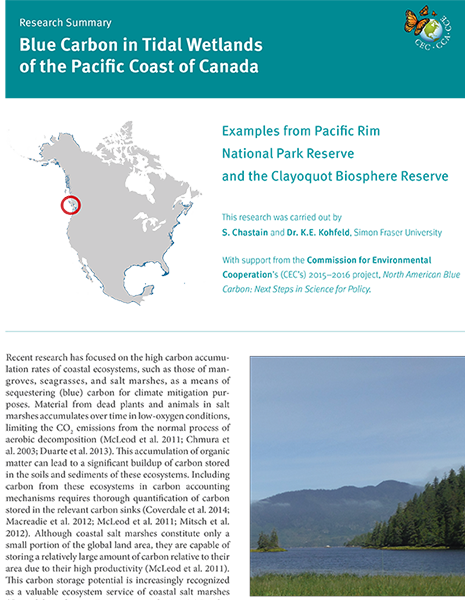Blue Carbon in Tidal Wetlands of the Pacific Coast of Canada:
Examples from Pacific Rim National Park Reserve and the Clayoquot Biosphere Reserve
Blue Carbon in Tidal Wetlands of the Pacific Coast of Canada:
Examples from Pacific Rim National Park Reserve and the Clayoquot Biosphere Reserve
Description
Recent research has focused on the high carbon accumulation rates of coastal ecosystems, such as those of mangroves, seagrasses, and salt marshes, as a means of sequestering (blue) carbon for climate mitigation purposes. Material from dead plants and animals in salt marshes accumulates over time in low-oxygen conditions, limiting the CO2 emissions from the normal process of aerobic decomposition (McLeod et al. 2011; Chmura et al. 2003; Duarte et al. 2013). This accumulation of organic matter can lead to a significant buildup of carbon stored in the soils and sediments of these ecosystems. Including carbon from these ecosystems in carbon accounting mechanisms requires thorough quantification of carbon stored in the relevant carbon sinks (Coverdale et al. 2014; Macreadie et al. 2012; McLeod et al. 2011; Mitsch et al. 2012)
Additional Information
